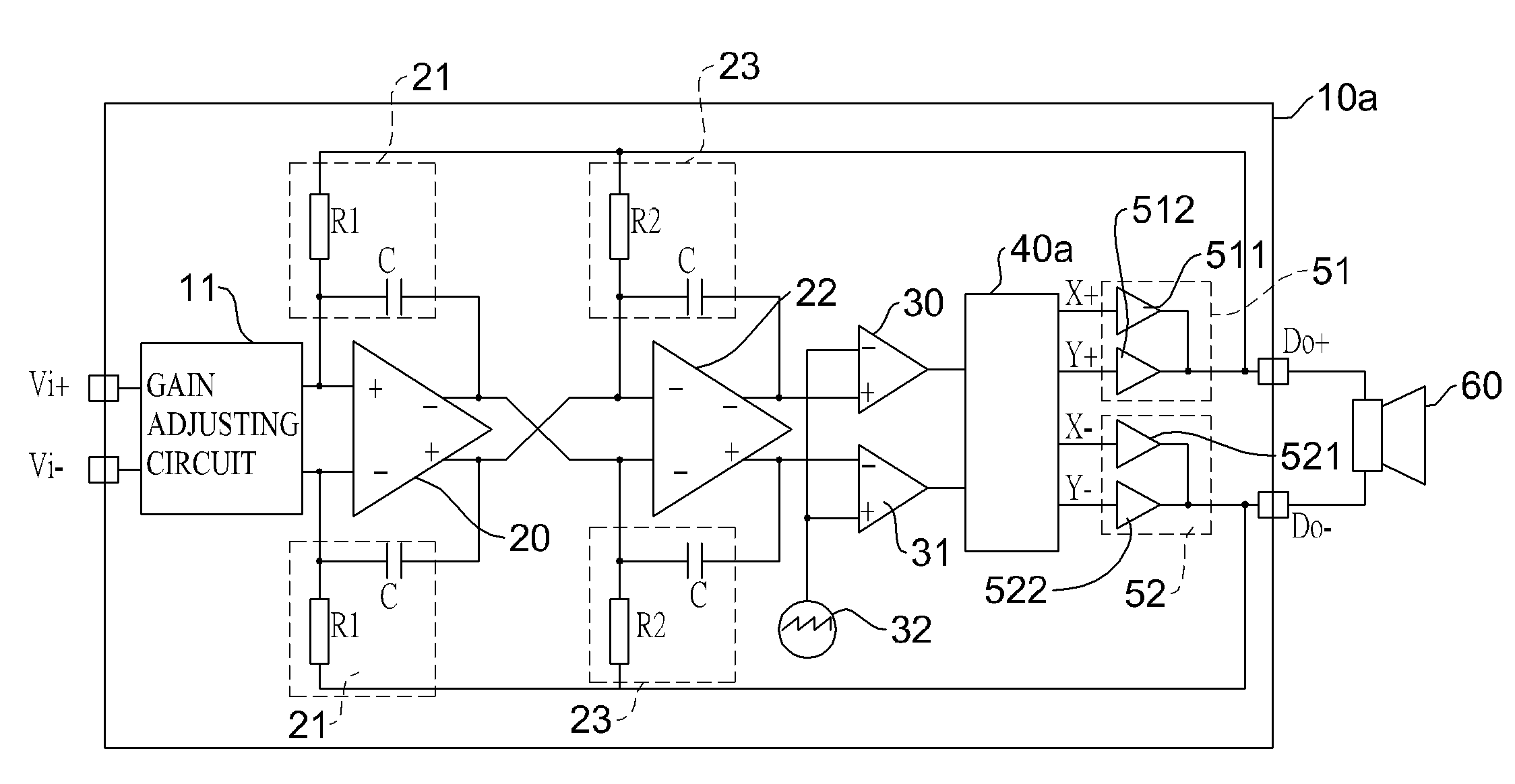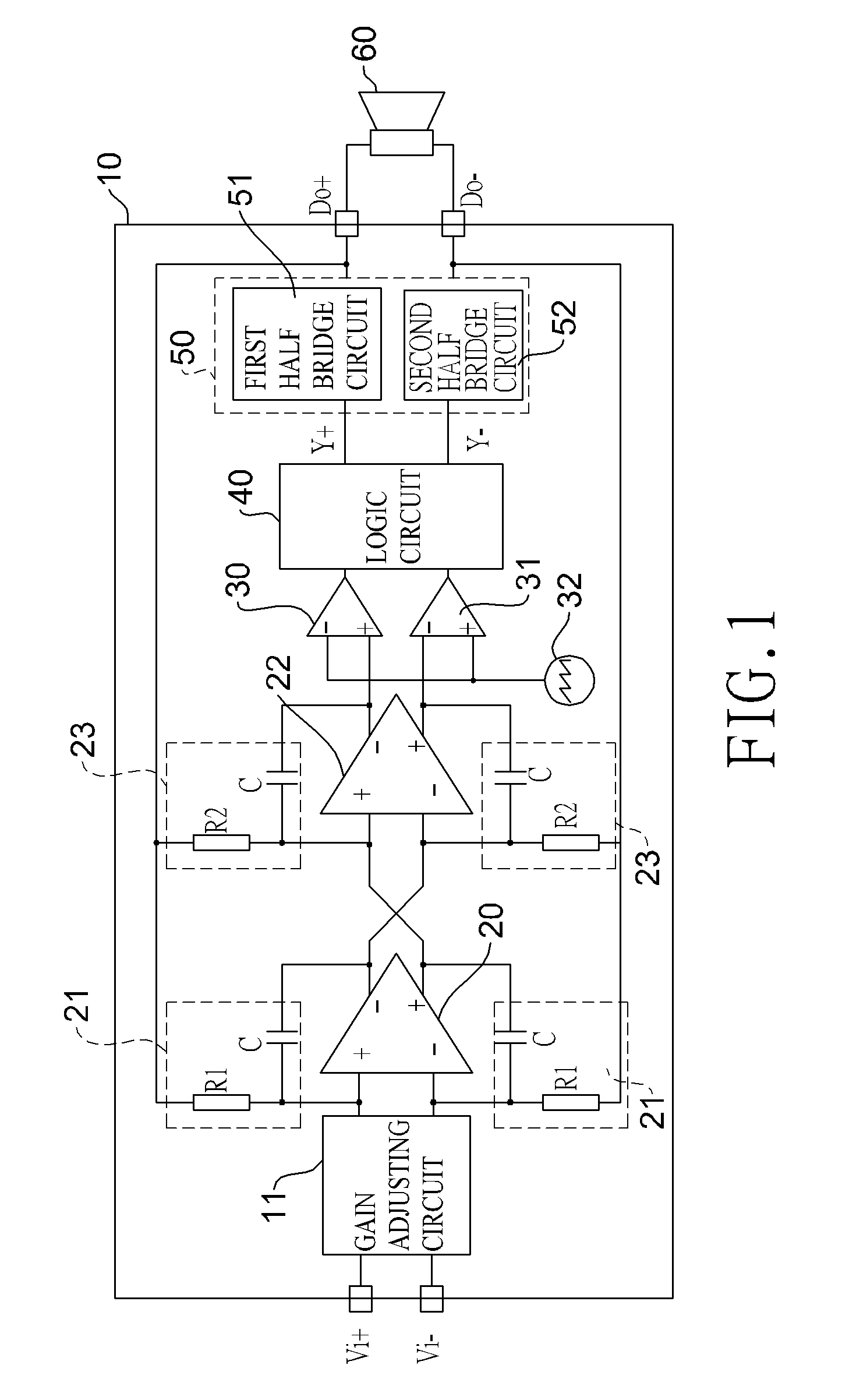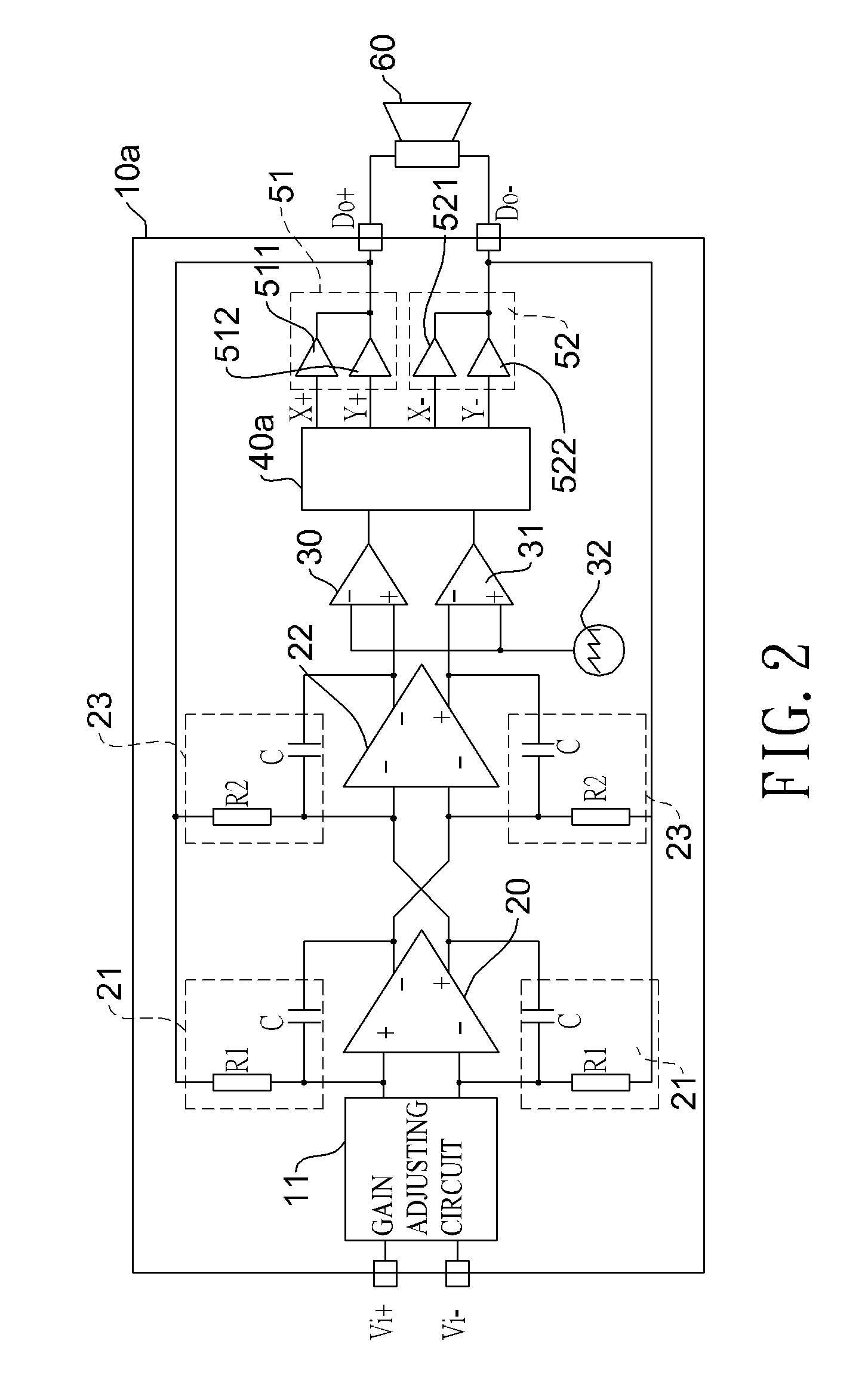Class-d amplifier with dual feedback loop
a feedback loop and amplifier technology, applied in the direction of amplifiers, dc amplifiers with modulator-demodulator, semiconductor devices/discharge tubes, etc., can solve the problem of limited noise shaping effect of class-d amplifiers through noise rejection (b>70/b>/i>a/i>), and achieve good signal-to-noise and distortion ratio (sndr).
- Summary
- Abstract
- Description
- Claims
- Application Information
AI Technical Summary
Benefits of technology
Problems solved by technology
Method used
Image
Examples
Embodiment Construction
[0039]With reference to FIG. 1, a class-D amplifier (10) comprises a gain adjusting circuit (11), a second-order integrator, two comparators (30)(31), an oscillator (32), a logic circuit (40), an output driver (50). The output driver (50) comprises a first half bridge circuit (51) and a second half bridge circuit (52), both connected to the logic circuit (40). The first half bridge circuit (51) and the second half bridge circuit (52) provide differential output terminals (Do+)(Do−) of the class-D amplifier (10) respectively.
[0040]The second-order integrator comprises a first differential amplifier (20), two first RC circuits (21), a second differential amplifier (22) and two second RC circuits (23).
[0041]The first differential amplifier (20) has a non-inverting input (+), an inverting input (−), a non-inverting output (+) and an inverting output (−). The non-inverting input (+) and the inverting input (−) of the first differential amplifier (20) are connected to the gain adjusting c...
PUM
 Login to View More
Login to View More Abstract
Description
Claims
Application Information
 Login to View More
Login to View More - R&D
- Intellectual Property
- Life Sciences
- Materials
- Tech Scout
- Unparalleled Data Quality
- Higher Quality Content
- 60% Fewer Hallucinations
Browse by: Latest US Patents, China's latest patents, Technical Efficacy Thesaurus, Application Domain, Technology Topic, Popular Technical Reports.
© 2025 PatSnap. All rights reserved.Legal|Privacy policy|Modern Slavery Act Transparency Statement|Sitemap|About US| Contact US: help@patsnap.com



